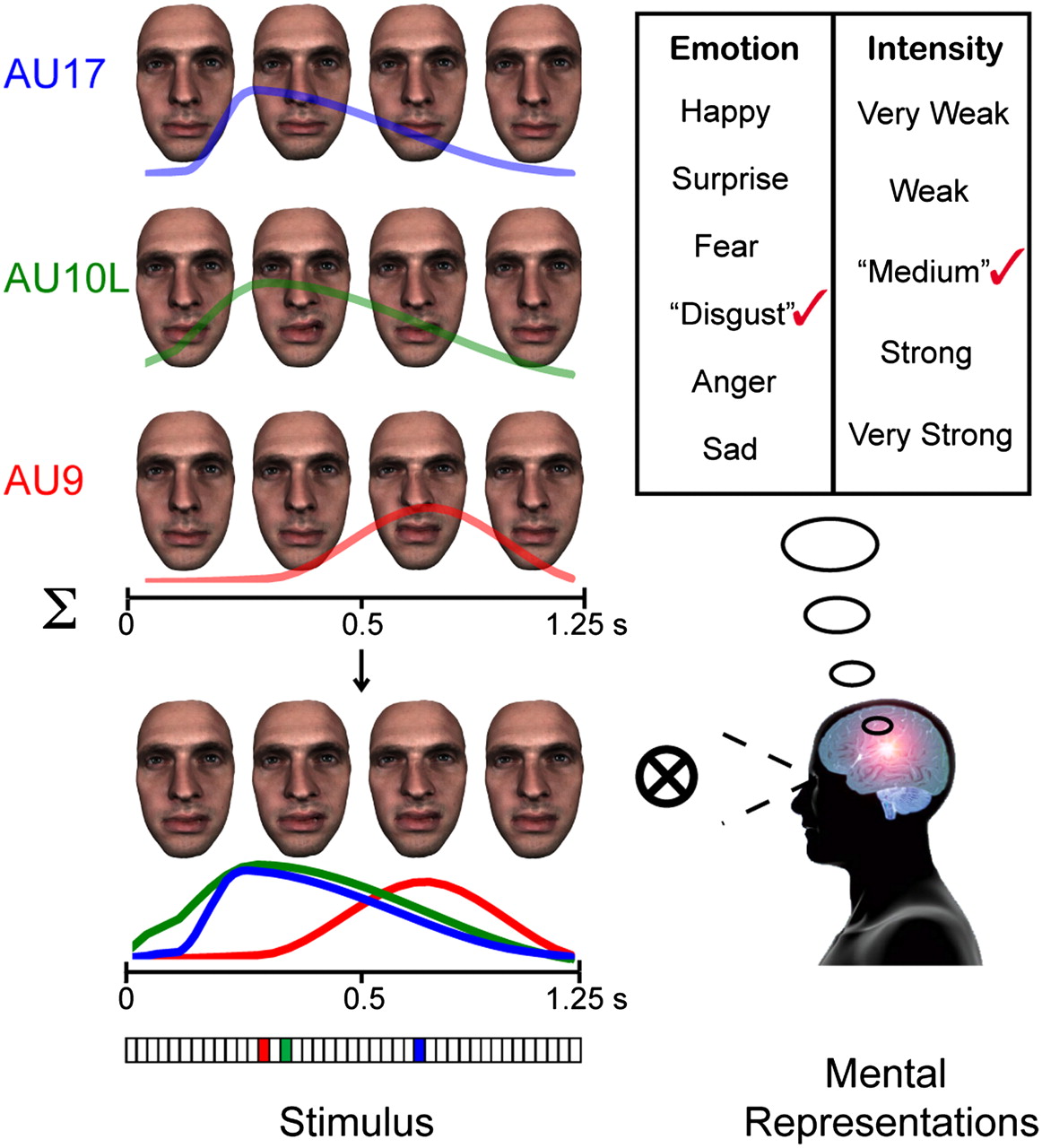The Other Side
Facial Expressions of Emotion are Not Culturally Universal
by Jack, Garrod, Yu, Caldara & Schys
The 2012 study "Facial expressions of emotion are not culturally universal," by Jack, Garrod, Yu, Caldara & Schyns presents a challenge to the previously mentioned universality theory, first proposed by Darwin. According to this theory, humans across various cultures, based on their shared evolutionary origins, express six basic emotions (happiness, sadness, anger, fear, surprise, and disgust) using the same facial movements. However, since consistent cross-cultural disagreement about emotions and their intensity conveyed by gold standard universal facial expressions is continuously found, Jack et al. (2012) set out to test the universality hypothesis, using a FACS based unique computer graphics program.
The Other Side
Facial Expressions of Emotion are Not Culturally Universal
by Jack, Garrod, Yu, Caldara & Schys
The 2012 study "Facial expressions of emotion are not culturally universal," by Jack, Garrod, Yu, Caldara & Schyns presents a challenge to the previously mentioned universality theory, first proposed by Darwin. According to this theory, humans across various cultures, based on their shared evolutionary origins, express six basic emotions (happiness, sadness, anger, fear, surprise, and disgust) using the same facial movements. However, since consistent cross-cultural disagreement about emotions and their intensity conveyed by gold standard universal facial expressions is continuously found, Jack et al. (2012) set out to test the universality hypothesis, using a FACS based unique computer graphics program.
 For the study, participants were shown various images portraying three-dimensional facial animations of random facial movements, called action units (AU's). AU's were randomly chosen for each trial. Observers were asked to categorize each random facial animation according to the six basic emotion categories (plus "don't know") and rate the emotional intensity on a five-point scale. The researchers assumed that participants would only interpret the random facial expression as a meaningful expression, if the facial movement corresponded to the observers mental representation of a particular facial expression (Jack, Garrod, Yu, Caldara & Schys, 2012).
For the study, participants were shown various images portraying three-dimensional facial animations of random facial movements, called action units (AU's). AU's were randomly chosen for each trial. Observers were asked to categorize each random facial animation according to the six basic emotion categories (plus "don't know") and rate the emotional intensity on a five-point scale. The researchers assumed that participants would only interpret the random facial expression as a meaningful expression, if the facial movement corresponded to the observers mental representation of a particular facial expression (Jack, Garrod, Yu, Caldara & Schys, 2012).
Results indicated that Western Caucasians represent the six basic emotions each with a distinct set of facial muscles. In contrast, East Asian cultures models of the six basic emotions overlapped considerably between categories, which may be an indication of a different, culture-specific, and therefore not universal, representation of the basic emotions (Jack et al., 2012).
 For the study, participants were shown various images portraying three-dimensional facial animations of random facial movements, called action units (AU's). AU's were randomly chosen for each trial. Observers were asked to categorize each random facial animation according to the six basic emotion categories (plus "don't know") and rate the emotional intensity on a five-point scale. The researchers assumed that participants would only interpret the random facial expression as a meaningful expression, if the facial movement corresponded to the observers mental representation of a particular facial expression (Jack, Garrod, Yu, Caldara & Schys, 2012).
For the study, participants were shown various images portraying three-dimensional facial animations of random facial movements, called action units (AU's). AU's were randomly chosen for each trial. Observers were asked to categorize each random facial animation according to the six basic emotion categories (plus "don't know") and rate the emotional intensity on a five-point scale. The researchers assumed that participants would only interpret the random facial expression as a meaningful expression, if the facial movement corresponded to the observers mental representation of a particular facial expression (Jack, Garrod, Yu, Caldara & Schys, 2012).
Results indicated that Western Caucasians represent the six basic emotions each with a distinct set of facial muscles. In contrast, East Asian cultures models of the six basic emotions overlapped considerably between categories, which may be an indication of a different, culture-specific, and therefore not universal, representation of the basic emotions (Jack et al., 2012).
-
Login:
-
(Logout)
More Than Meets the Eye

